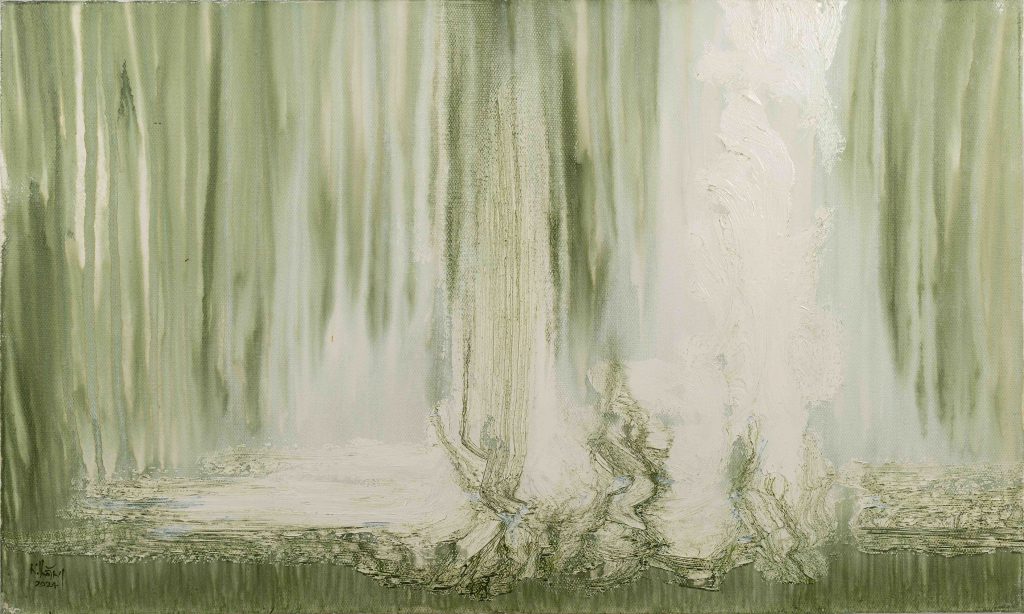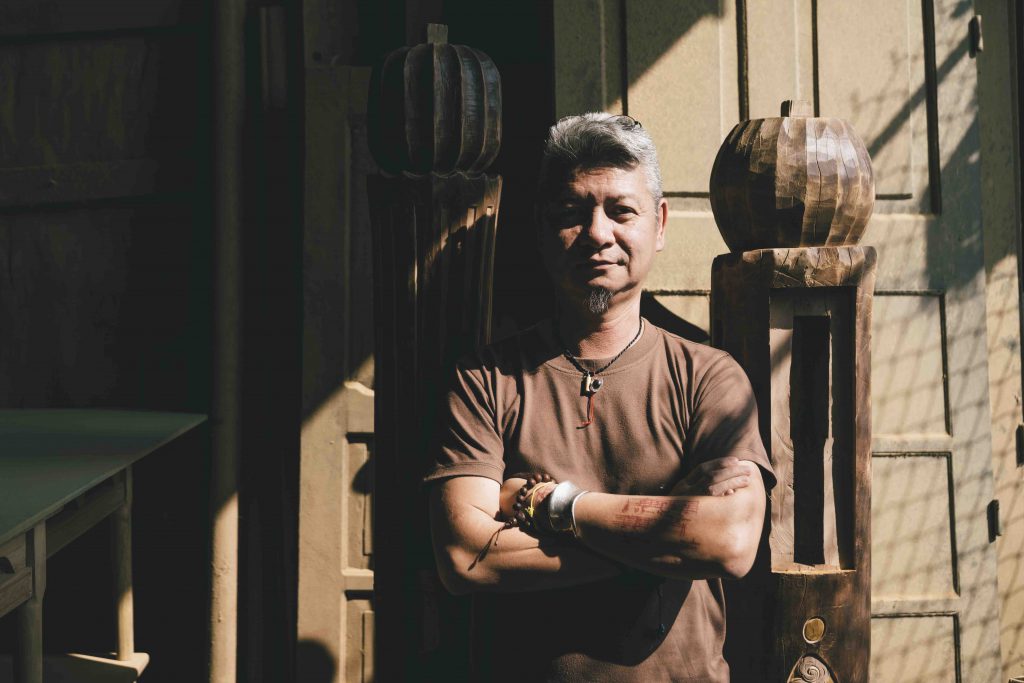Story: Phan Huyen Thu
Photos: Pham Ba Hung, Tan Pham
In Tran Nhat Thang’s work, this metaphor is distinctive, powerful, and deeply representative of his generation. From the very beginning of his artistic journey at the Vietnam University of Fine Arts, he embraced abstraction with unwavering determination. Over the past 30 years, through 17 solo exhibitions and hundreds of group exhibitions alongside like-minded artists, abstract painting has remained his defining signature—a visual language that continues to evoke memories of his artistic legacy.

The fragments of “The White Cloud Path”
Since his first solo exhibition, The White Cloud Path, in Paris in 1998, followed by Alone in 1999, the group exhibition The White Cloud Path in 2003, and another exhibition of the same name in Hanoi in 2006, Tran Nhat Thang has conveyed a sense of inner fragmentation. His work reflects the collective experience of a generation of artists born and raised in post-war Vietnam, capturing their emotional and psychological landscapes with profound depth.
He reached a significant milestone by successfully capturing the fractures in the artistic evolution from the early 20th century—beginning with Victor Tardieu’s establishment of the Indochina College of Fine Arts in 1924—to a quiet yet resolute embrace of abstraction. His approach, both cautious and effective, seamlessly aligns with the trajectory of modern painting. These abstract voices dared to assert individuality in a landscape dominated by creative uniformity. Tran Nhat Thang stands as one of those bold fragments—strong enough to embody an era of artistic rupture.

A Portrait of Freedom – a self-portrait of solitude
In 2009, a voice of freedom unexpectedly emerged through an exhibition in Hanoi, subtly affirming Tran Nhat Thang’s second artistic choice. It also revealed his determination to resist the pressures of trends and the market—the struggle for both survival and reputation in the post-Doi Moi (Renovation) market economy. Once again, Mr. Thang embraced solitude, quietly setting himself apart like a small stream, recognizing that Vietnamese artists, in any era, rarely experience true solitude. Or rather, many have never had enough solitude to fully devote themselves to creation. A Portrait of Freedom is, at its core, a portrait of absolute solitude. Here, freedom equates to being lost and unrecognized, devoid of both artistic fulfillment and existential comfort in daily life. After that, he seemed frozen for a long time—putting down his brush, ceasing to paint, and confronting it all: the notions of freedom, survival, and the search for healing and reconciliation, in an effort to reconstruct himself once more.

Time – the greatest metaphor for healing and reconciliation
It’s clear that Tran Nhat Thang’s seventeenth solo exhibition, Time, held in collaboration with sculptor Tung Le in December 2024, is not a retrospective or a declaration of personal achievement. Instead, it is a quiet gesture—a reflection of his 30-year journey of loving and living through abstract painting. From the beginning, he rejected the idea of summarizing or defining his legacy. What he values is the journey itself and the experience of existence, rather than forging a path or pursuing ambition. During this period, Mr. Thang has also resolved the paradox between survival and creation by choosing himself—immersing fully in the vast continuum of Time.
However, one cannot ignore the ideological choices he has made in his return to the primitive asceticism of pure color and form. Through solo exhibitions such as Region (2018), Region of Nothingness (2022), In the Nothingness of Nothing (2023), and Clouds Passing Through Me and Cloud Region (2024), Tran Nhat Thang has almost entirely surrendered to himself. This is a surrender of reason—allowing the inner self to dictate each brushstroke and the movement of color. More than anyone, he understands that art is the ultimate metaphor for life, emerging from the selfless nature of existence.
In Time, Tran Nhat Thang reflects on his 30-year journey, distilling the joys, sorrows, loves, and conflicts of life into a spectral palette. He moves forward with a calm, reflective spirit—one who understands the ways of the world, standing quietly at the threshold of the creative universe, embracing the serendipity of human existence with gratitude.










